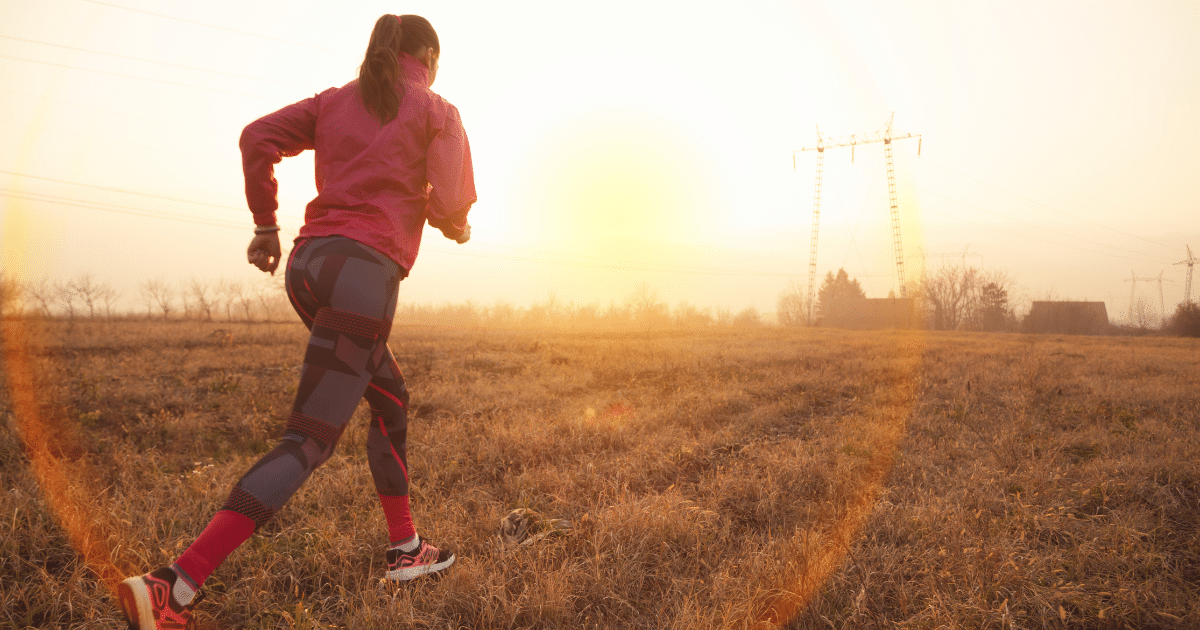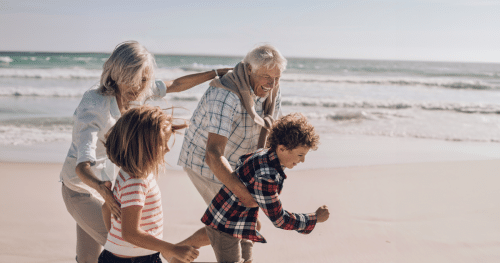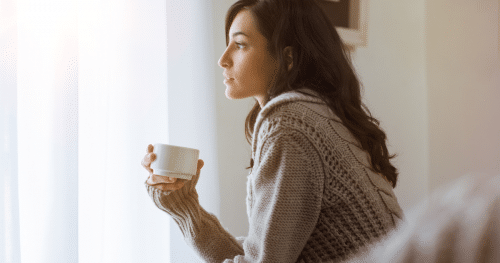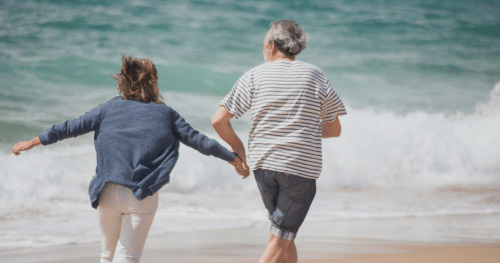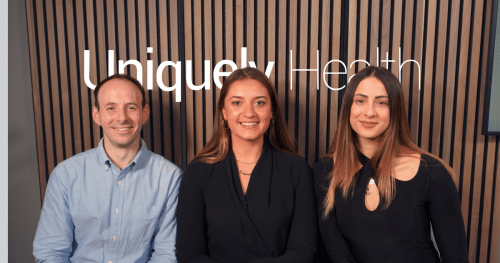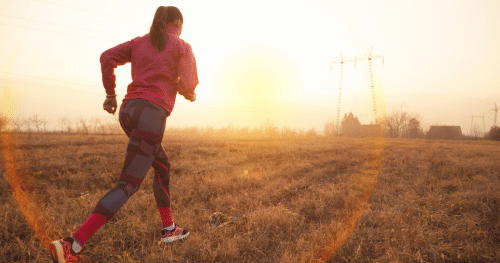Written by Sabine Hoadley, Bsc (Hons), Lead Exercise Scientist
Seasonal Affective Disorder (SAD) casts a shadow over the lives of many, particularly during the winter months when daylight is limited. Often referred to as the “winter blues,” SAD affects approximately 5-10% of the population, with a notable prevalence among women, who are three to five times more likely to experience its impact.
What is SAD?
SAD – Seasonal affective disorder, is a recurrent depressive disorder that affects people at certain times of the year – often during autumn and winter months when daylight hours are much shorter(1). It is sometimes referred to as the “winter blues”.
What are the symptoms of SAD?
- Feeling sad
- Feeling irritable
- Low mood
- Low energy levels
- Weight gain
Why do darker days lead to SAD?
People with SAD have difficulty regulating the chemical messenger serotonin. Serotonin plays a key role in regulating our mood, as well as other functions such as sleep and body temperature. In winter months, people with SAD tend to see a decrease in serotonin activity meaning they may experience low moods.
It is also known that people with SAD tend to produce too much melatonin, which is a hormone that helps us to feel sleepy at night. When the days get shorter, melatonin production increases, making people sleepy and lethargic.
During shorter days when there is less sunlight, people are susceptible to changes in circadian rhythm (your natural body clock). This internal clock is responsible for regulating your mood, sleep and hormones.
Another reason for SAD is the lack of Vitamin D that people get in the winter months. 80-90% of vitamin D is produced in the skin cells from exposure to the sunlight. Only 10-20% of vitamin D can be derived from diet (2).
A combination of decreased serotonin, increased melatonin and lower vitamin D absorption in winter months can lead to feelings of depression and lethargy at this time of the year.
Who is affected by SAD?
- Approximately 5-10% of the population suffers from SAD (3)
- 3-5 times more women suffer with SAD than men(3)
How can I combat SAD through lifestyle choices?
- Exercise is an effective way to manage symptoms of SAD and reduce depressive feelings – aim for 30 minutes of outdoor aerobic exercise such as a run or cycle with good sunlight exposure (4, 5)
- Using meditative practice such as yoga to help with mood and managing stress levels
- Bright light therapy is an effective treatment for around 80% of people with SAD (3)
- Aim to boost Vitamin D through exposure to sunlight throughout the day. Vitamin D can also be boosted through diet by eating foods such as oily fish, salmon, mackerel, sardines, herring , red meat , egg yolks and mushrooms
Does bright light therapy work for SAD?
Bright light therapy is a type of treatment for people who either have circadian rhythm sleep disorders, or seasonal depressive disorders such as SAD.
Light boxes (sometimes known as seasonal affective disorder lamps) are a common tool for light therapy – and studies have shown that around 2 hours of exposure to 2500 lux of light can be effective in the treatment of SAD (readily available online). Newer models producing 10,000 lux of light can be used for as little as 15 minutes(6)
Seasonal Affective Disorder and Exercise
Exercise can influence your circadian rhythm (internal body clock) as well as chemical messengers within the body. Both of these play key roles in mood regulation and are linked to feelings of happiness, if well balanced.
It is essential to build exercise into your daily routine, as well as make sure you spend time outdoors, manage your stress levels and seek professional advice if you are worried about depressive thoughts. Each of these can help you to manage SAD.
How can we help you at Uniquely Health?
We offer health programmes that can help to improve your management of seasonal affective disorder.
Our team of clinicians including GPs, Exercise Scientists and Registered Dietitians are here to help you make the best lifestyle choices to feel happier and healthier. Our plans include the option of comprehensive blood testing which can indicate whether key biomarkers such as vitamin D are in an optimal range. This can help to inform the best approach for you and your health journey.
Together we can help you to understand patterns in your mood and put together a comprehensive plan to help you feel better and live longer.
Key Conclusions
1. SAD is a mood disorder that affects people when daylight is shorter.
2. It can be managed through lifestyle: aerobic exercise, vitamin-D-rich foods and meditation.
3. Spending time in daylight, either outdoors or using a bright light therapy lamp can adjust your circadian rhythm and improve symptoms.
If you are looking for support to manage Seasonal Affective Disorder, book a complimentary call with our team to discuss how we can help you.
- Melrose, S., 2015. Seasonal affective disorder: an overview of assessment and treatment aDepression research and treatment, 2015.
- National Institute for Health and Care Excellence [NICE] (revised 2022). Vitamin D Deficiency in Adults.
- Winkler, D., Pjrek, E., Iwaki, R. and Kasper, S., 2006. Treatment of seasonal affective disorder. Expert review of neurotherapeutics, 6(7), pp.1039-1048
- Peiser, B., 2009. Seasonal affective disorder and exercise treatment: a review. Biological Rhythm Research, 40(1), pp.85-97
- Pinchasov, B.B., Shurgaja, A.M., Grischin, O.V. and Putilov, A.A., 2000. Mood and energy regulation in seasonal and non-seasonal depression before and after midday treatment with physical exercise or bright light. Psychiatry research, 94(1), pp.29-42
- Hershner, 2020. What is bright light therapy? ASASM Sleep Education Available at <https://sleepeducation.org/patients/bright-light-therapy/>
